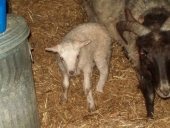
 1
1




Xisca - pics! Dry subtropical Mediterranean - My project
However loud I tell it, this is never a truth, only my experience...
 3
3




A piece of land is worth as much as the person farming it.
-Le Livre du Colon, 1902
 3
3




Sourdough Without Fail Natural Small Batch Cheesemaking A Year in an Off-Grid Kitchen Backyard Dairy Goats My website @NourishingPermaculture @KateDownham






 1
1




 1
1




PSST. Hey dude, want some status updates?
*opens trench coat*
www.alexisrichard.com
 2
2




 6
6




It's never too late to start! I retired to homestead on the slopes of Mauna Loa, an active volcano. I relate snippets of my endeavor on my blog : www.kaufarmer.blogspot.com




Xisca - pics! Dry subtropical Mediterranean - My project
However loud I tell it, this is never a truth, only my experience...




PSST. Hey dude, want some status updates?
*opens trench coat*
www.alexisrichard.com
 4
4








Xisca - pics! Dry subtropical Mediterranean - My project
However loud I tell it, this is never a truth, only my experience...
 1
1




Xisca Nicolas wrote:1st, Alexis, what you said was right! Just that Su Ba's answer showed an obvious enormous experience....
Jen, I used the vet stuff because I did not have enough options, and time counts!
Usnea is a discovery and I think that I can get it in wetter places, not far from mine.
https://www.herbalremediesadvice.org/usnea-herb.html
and here they say you can dry it :
https://www.mountainroseherbs.com/products/usnea-extract/profile
I am not sure which one is red root.... Latin name? There are 2 plants known as red root or redroot...




PSST. Hey dude, want some status updates?
*opens trench coat*
www.alexisrichard.com
 2
2




With appropriate microbes, minerals and organic matter, there is no need for pesticides or herbicides.
 2
2




Our Destination is Our Legacy
www.peacefulvalleyfold.com





DIY castor oil pack: *This is for external use only. Please note that castor oil stains, so wear old clothes and use towels you don’t mind staining. After each use, wash the breast well so that your baby does not ingest the oil from nursing or pumping.
High-quality castor oil (organic if possible)
Dry cloth (any material that will soak up the oil well)
Saran wrap or plastic bag
Old towel (to cover oil-soaked cloth or to lay on)
Heating pad or warm rice sock
Soak the cloth in the oil, it should be saturated but not dripping. Apply cloth to the affected area of your breast then cover with saran wrap or a plastic bag (or old towel) if desired before placing the heating pad on top. Leave the cloth on for 20-30 minutes, repeating every few hours until symptoms are relieved. After use, cloth can be re-used, just place it in the refrigerator after each use.
Tradition is not the worship of ashes, but the preservation of fire.

|
Water! People swim in water! Even tiny ads swim in water:
Learn Permaculture through a little hard work
https://wheaton-labs.com/bootcamp
|



